Mirror in the arrangement shown in figure is moving up with speed 8cm/sec. There is an object O outside water. Speed of final image formed after two refraction and one refraction and the reflection is :
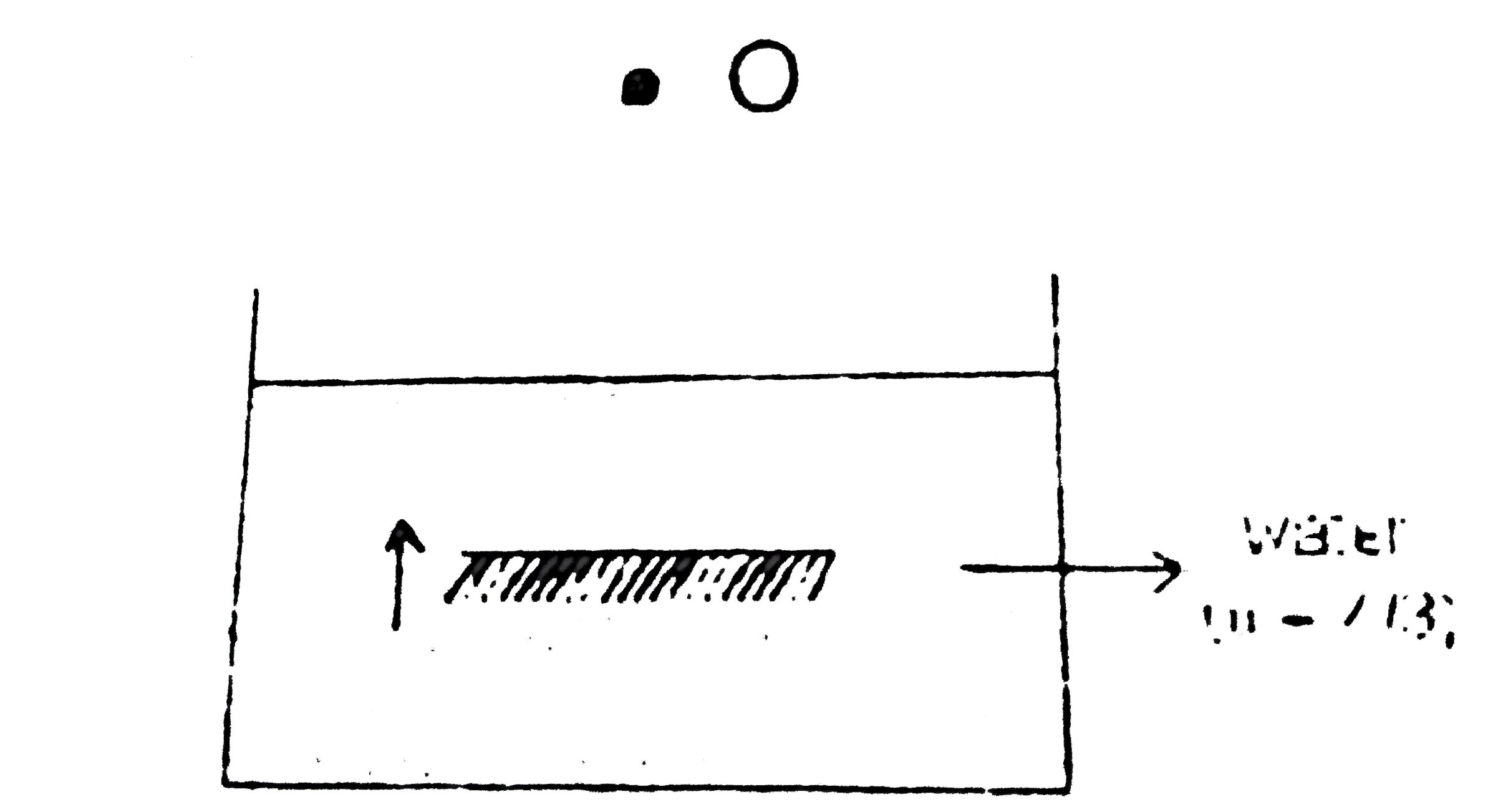 .
.
10cm/s
8 cm
12cm/s
data insufficient
The correct Answer is:C
Apparent distance of mirror from O
=x+yμ
Distance of final image from O
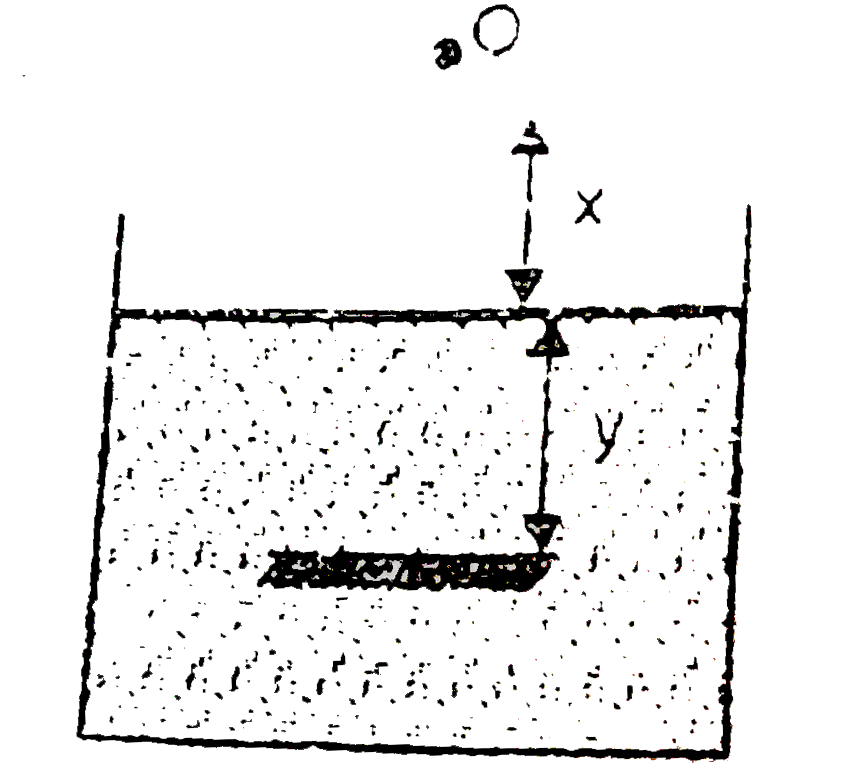
=2(x+yμ)
velocity of image
=2(dxdt+1μdydt)=2μ×8=24/3×8=12cm/s
Topper's Solved these Questions
- BOOK - RESONANCECHAPTER - DAILY PRACTICE PROBLEMEXERCISE - DPP No.249videos
DAILY PRACTICE PROBLEM
- BOOK - RESONANCECHAPTER - DAILY PRACTICE PROBLEMEXERCISE - DPP No.2520videos
DAILY PRACTICE PROBLEM
- BOOK - RESONANCECHAPTER - DAILY PRACTICE PROBLEMEXERCISE - DPP No.229videos
DAILY PRACTICE PROBLEM
- BOOK - RESONANCECHAPTER - CURRENT ELECTRICITYEXERCISE - High Level Problems (HIP)21videos
CURRENT ELECTRICITY
- BOOK - RESONANCECHAPTER - ELECTRO MAGNETIC WAVESEXERCISE - Exercise 327videos
ELECTRO MAGNETIC WAVES
Similar Questions
An insect at point 'P' sees its two images in the water mirror system as shown in the figure. One image is formed due to direct partical reflection from water surface and the other image is formed due to refraction, reflection & again refraction by water mirror system in order. Find the separation (in cm) between the two images. Mirror M has focal length 60 cm [Takeμw=4/3]
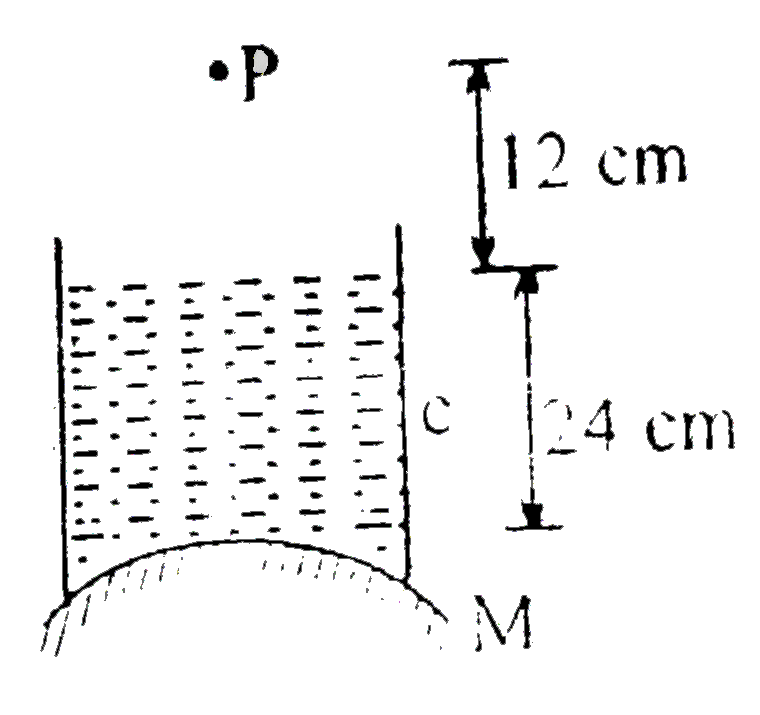 View Solution
View SolutionObject O is placed in front of a plane mirror M. A glass slab S having thickness t = 3 cm and refractive index μ=1.8 is placed between the object and the mirror. The refracting faces of the slab are parallel to the mirror surface. The object is made to move with a velocity of u=2m/s perpendicular to the mirror surface. Find the speed of the image formed after
(a) refraction from the slab followed by reflection from the mirror.
(b) refraction from the slab followed by reflection from the mirror followed by the refraction from the slab.
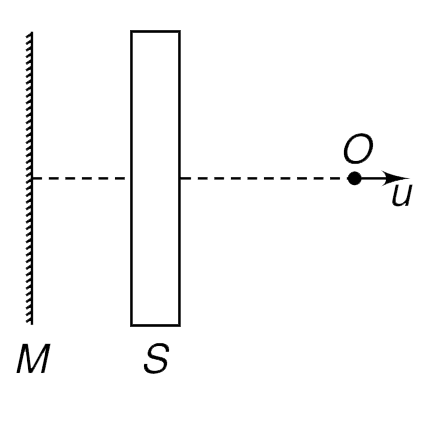 View Solution
View Solution
Knowledge Check
- Question 1 - Select One
Figure shown objectO.Final image I isformed after two refraction and one refraction is also shown in figure .Find the length of mirror.(in cm).
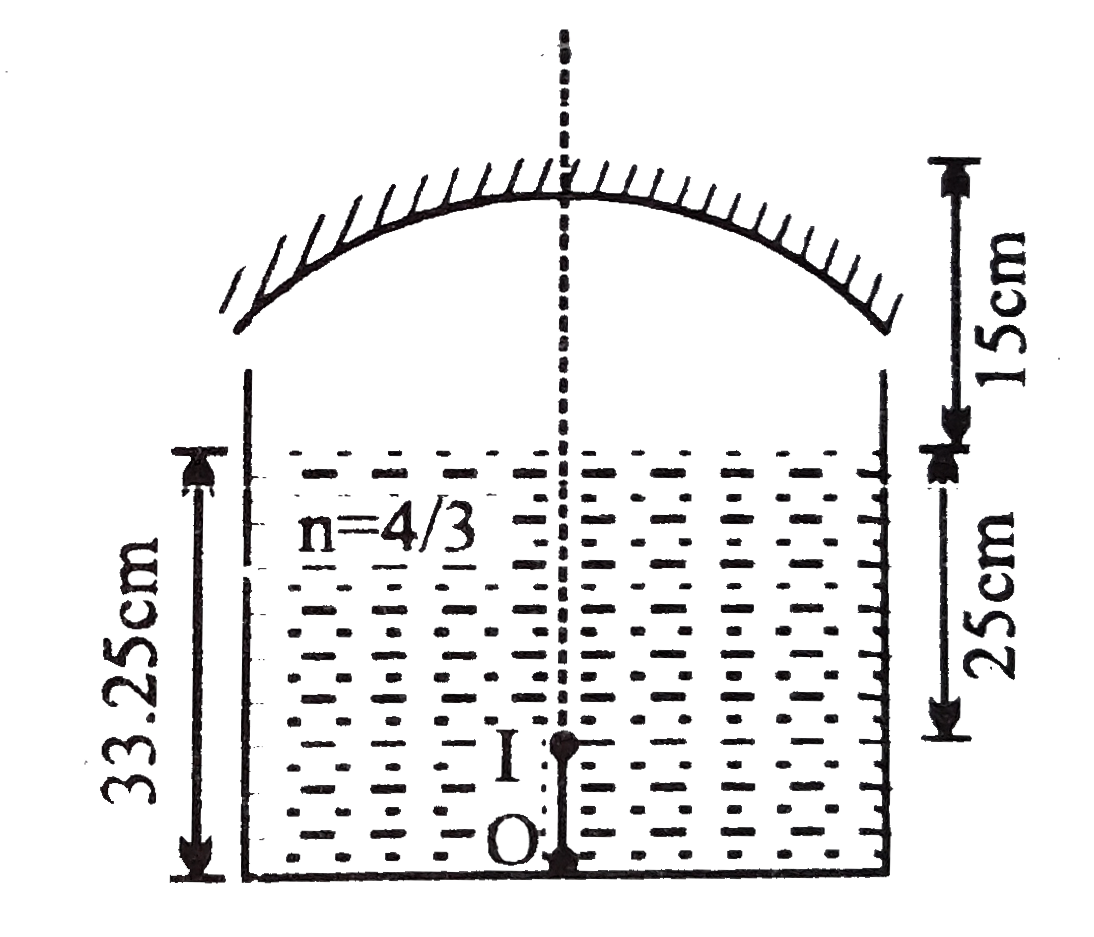 A10B15C20D25
A10B15C20D25 - Question 2 - Select One
Figure shows object O. Final image I is formed after two refractions and one reflection is also shown in figure. Find the focal length of mirror. (in cm) :
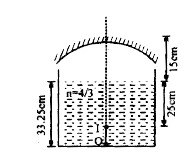 A10B15C20D25
A10B15C20D25 - Question 3 - Select One
All objects referred to the subsequent problems lie on the principal axis.

In above question if the object is real, then the final image formed after two refractions :Amay be realBmay be virtualCmust be virtualDboth A and B
A plane mirror and a concave mirror are arranged as shown in figure and O is a point object, Find the position of image formed by two reflection, first one talking place at concave mirror.
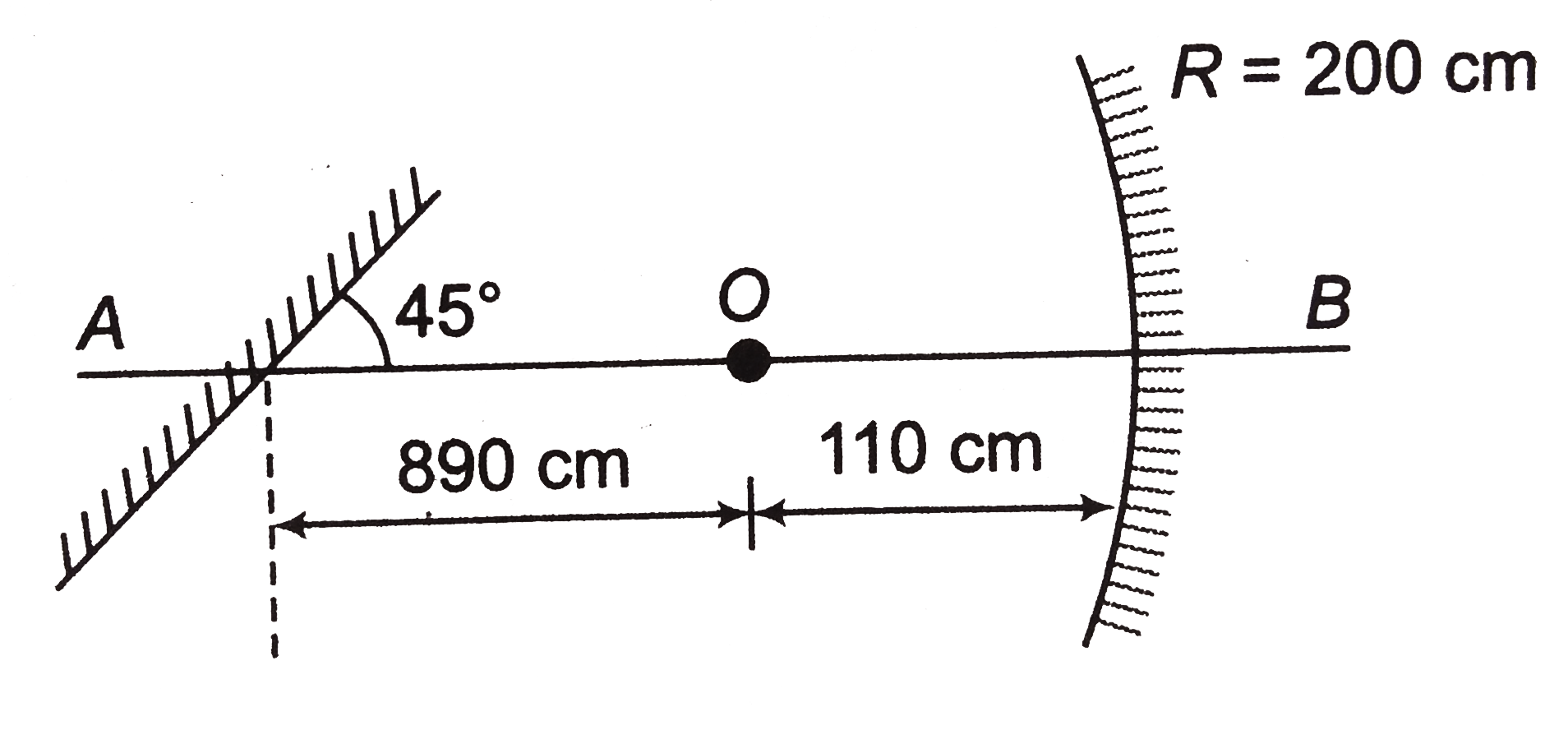 View Solution
View SolutionFigure shows a transparent hemisphere of radius 3'0 cm made of a material of refractive index 2.0. (a) A narrow beam of parallel rays is incident on the hemisphere as shown in the figure. Are the rays totally reflected at the plane surface ? (b) Find the image formed by the refraction at the first surface. (c) Find the image formed by the reflection or by the refraction at the plane surface. (d) Trace qualitatively the final rays as they come out of the hemisphere.
 View Solution
View SolutionIn the figure shown , a point object O is placed in air on the principal axis. The radius of curvature of the spherical surfaces is 60cm. I is the final image formed after all reflections and refractions.
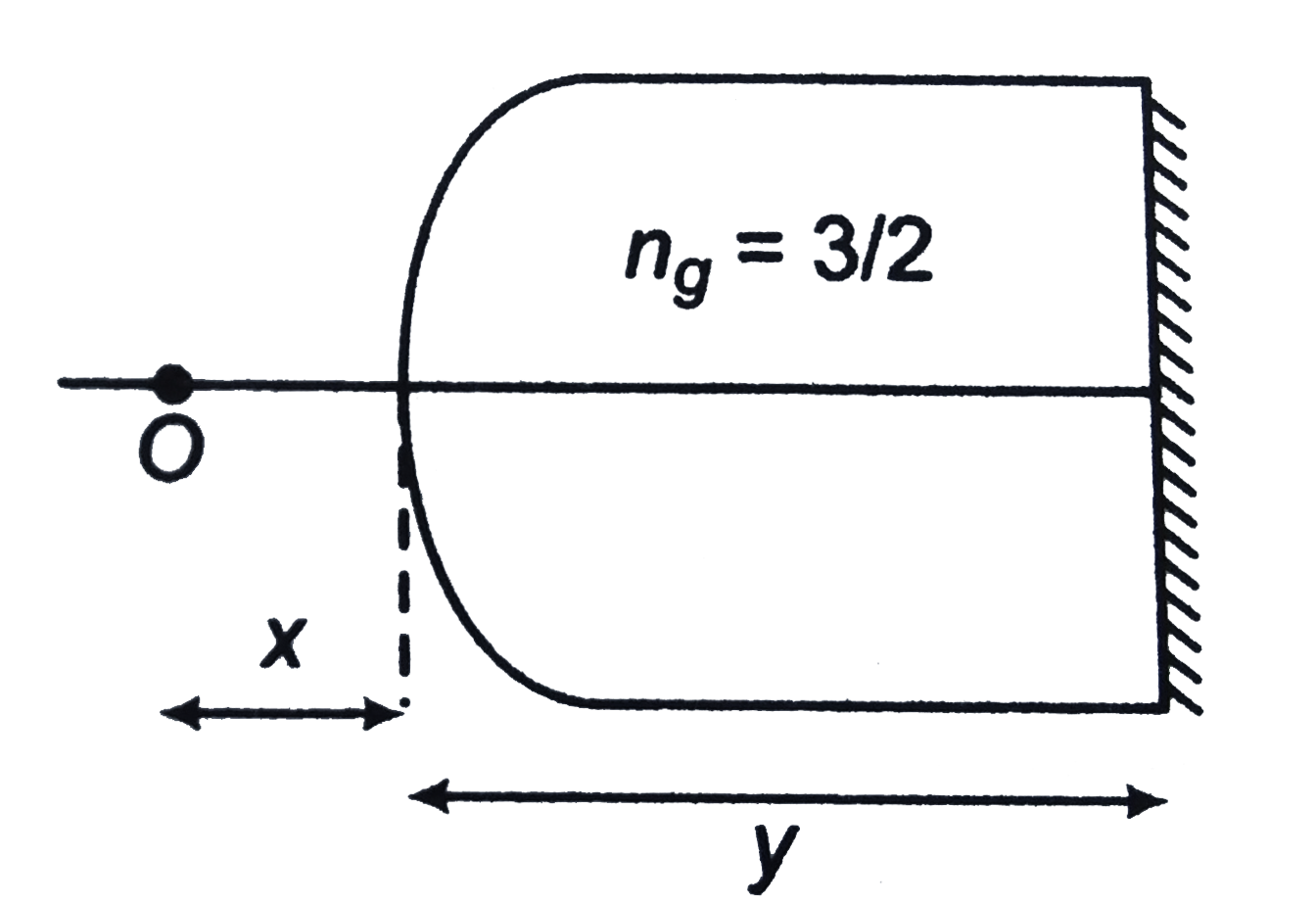 View Solution
View Solution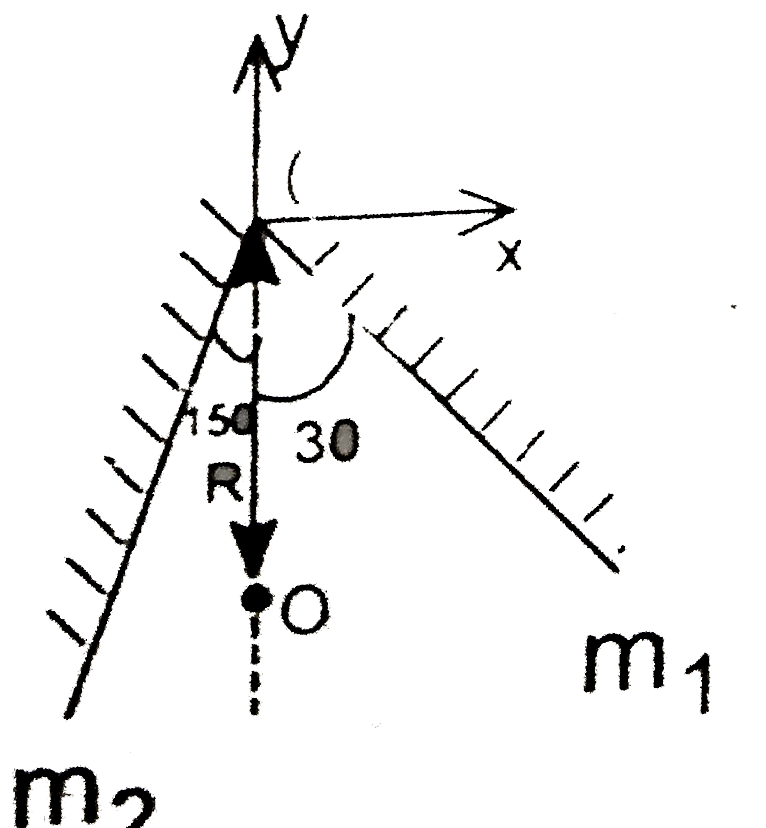
Two plane mirrors intersect at origin. An object 'O' is kept at a distance R on negative y-axis as shown in the figure. The co-ordinates of images formed after three reflections will be (first reflection is is considered at m1)View SolutionAn object is placed at a distance of 40 cm from a convex lens of focal length 20cm. On the far side of the lens, a concave mirror of focal length 10cm is placed such that the distance of the object from the concave mirror is 100 cm. Then the final image which is formed after refraction from the lens, reflection from the mirror and again refraction from the lens, will be
View Solution

